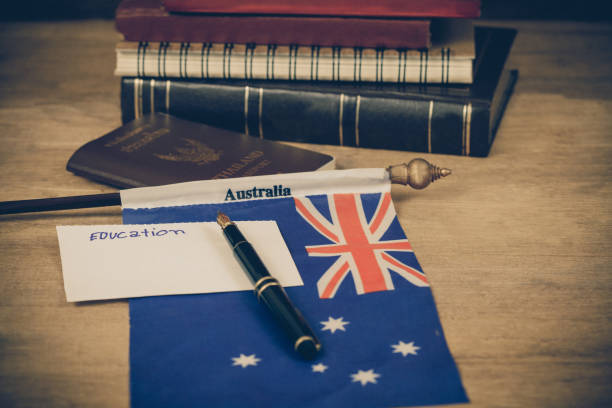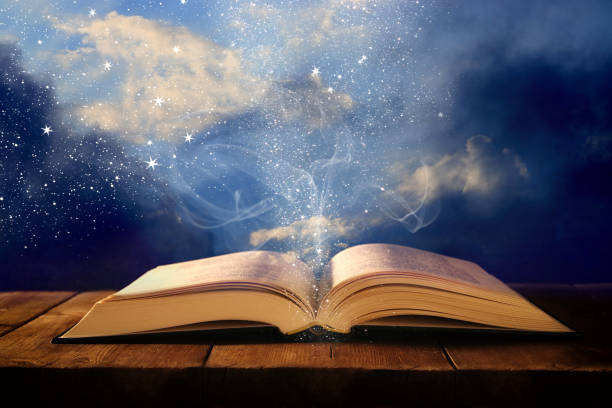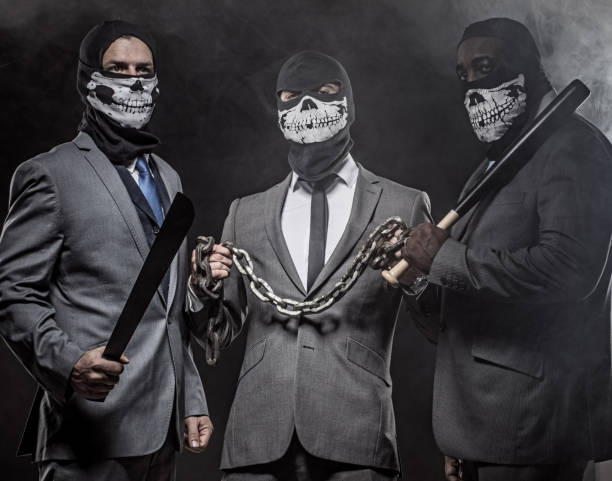How To Write A Military Fantasy (13 Best Tips)
Embarking on the journey of crafting a military fantasy demands a unique blend of strategic thinking, creative alchemy, and the ability to immerse readers in the thunderous clash between realms where war and magic intertwine.
In this intricate dance of genres, the narrative battlefield becomes a canvas where military tactics and fantastical elements converge.
From the meticulous research of real-world military history to the nuanced exploration of characters and the creation of entire fantastical worlds, writing military fantasy is a symphony of creativity.
This guide will delve into the art of balancing action and strategy, creating compelling protagonists, and fine-tuning the rhythm of battle scenes.
We’ll explore the nuances of world-building, the importance of themes like honor and sacrifice, and the precision required in utilizing authentic military terminology.
Join this literary expedition where words become weapons, and the pages of your story unfold into realms where valor and magic collide with breathtaking intensity.
Welcome to the realm of writing military fantasy, where every stroke of the pen is a strategic maneuver, and every narrative choice is a quest into uncharted territories of imagination.
How To Write A Military Fantasy
Certainly! Here’s a step-by-step process on how to write a military fantasy:
Define the World
Establish the setting, including the geography, politics, and cultures. Decide on the level of technology and magic in your world.
Create Factions and Nations
Develop different military factions or nations with unique histories, ideologies, and conflicts. Consider the relationships and alliances between these entities.
Magic System
If magic is part of your world, define the rules and limitations of the magic system. Determine how magic interacts with military strategies and weaponry.
Character Development
Introduce diverse characters with varying backgrounds, skills, and motivations. Include protagonists, antagonists, and supporting characters with military roles.
Military Structure
Design a realistic military structure for each faction, including ranks, units, and specialized roles. Consider how magic or fantastical elements influence the military organization.
Weapons and Technology
Create unique weapons, armor, and military technology that fit the fantasy setting. Consider the impact of magic on weaponry and how it shapes battles.
Strategic Warfare
Plan out large-scale battles and military campaigns. Use your understanding of military tactics to create believable and engaging conflicts.
Worldbuilding Consistency
Ensure consistency in the application of rules, magic, and technology throughout the story. Pay attention to details like supply lines, logistics, and the impact of fantastical elements on the world.
Political Intrigue
Integrate political intrigue and diplomacy into the narrative to add depth to the story. Explore the relationships between military leaders and political figures.
Cultural Nuances
Highlight the cultural aspects of warfare, such as rituals, traditions, and the impact of war on civilian life. Showcase the psychological toll of war on individuals and societies.
Character Arcs and Growth
Develop character arcs within the military context, showing personal growth and challenges. Explore the moral and ethical dilemmas faced by characters in a wartime setting.
Dialogue and Language
Use authentic and immersive language that reflects the military culture of your fantasy world. Create unique idioms or phrases that fit the setting.
Edit and Revise
Review your manuscript for consistency, pacing, and coherence. Seek feedback from beta readers or writing groups to refine your military fantasy narrative.
Remember, these steps are flexible, and you can adapt them to suit your creative process. Happy writing!
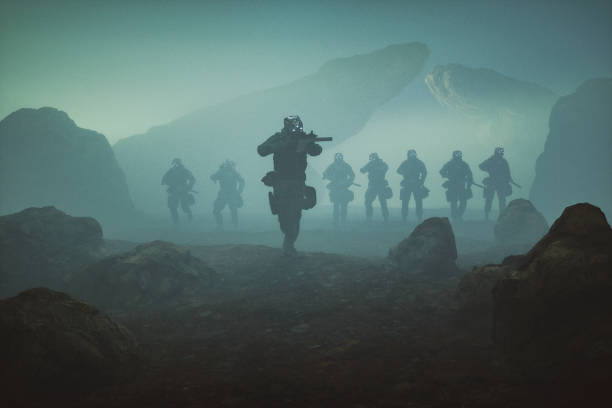
Understanding Military Tactics and Strategy
In the symphony of war, understanding military tactics and strategy serves as the conductor’s baton, orchestrating a harmonious dance between triumph and chaos.
Picture a vast battlefield, where the strategic brilliance of commanders becomes the brushstrokes on a canvas of conflict. Dive into the intricate world of military history, where ancient battle formations, medieval sieges, and modern warfare choreograph a captivating ballet of strategy.
Here, the essence lies not only in the clash of swords or the roar of cannons but in the cerebral chess game played by military masterminds. Unraveling the secrets of military tactics unveils a tapestry where every maneuver, feint, and calculated risk becomes a brushstroke that paints the landscape of victory or defeat.
It is in this profound understanding that the true artistry of military fantasy comes to life, where the pen wields the sword with eloquence and strategy dances with the magic of imagination.
Researching real-world military history
Embarking on the journey of crafting a military fantasy masterpiece demands a deep dive into the annals of real-world military history. Imagine stepping into the footprints of legendary generals, witnessing the ebb and flow of ancient battles, and deciphering the strategic genius of military minds across centuries.
Researching real-world military history is akin to unlocking a treasure trove of tactics, innovations, and the gritty realities of warfare.
Delving into the intricacies of ancient conflicts, such as the phalanx formations of Greece or the siege warfare of medieval castles, provides a rich foundation upon which fantastical realms can be built.
From the evolution of weaponry to the rise and fall of empires, this historical excavation becomes the cornerstone for constructing a vivid and authentic backdrop for epic tales of war and magic, ensuring that every page resonates with the echoes of battles fought and strategies unfolded in the corridors of time.
Incorporating realistic military elements
Incorporating realistic military elements into the tapestry of a military fantasy narrative is akin to forging a blade tempered in the fires of authenticity. The seamless integration of real-world military intricacies lends a weighty credibility to the fantastical realms being woven.
From the disciplined formations of soldiers to the logistical ballet required for sustained warfare, these elements ground the narrative in a visceral reality.
Attention to details such as weapon craftsmanship, the hierarchy of command, and the strategic deployment of forces not only enrich the storytelling experience but also evoke a sense of familiarity that resonates with readers.
It is in the nuanced interplay between the fantastic and the authentic that a narrative gains both depth and resonance, allowing readers to not only witness the clash of magical forces but also appreciate the strategic choreography that underpins the art of war within the fantastical realms.
World-Building
World-building, in the realm of military fantasy, is the alchemical art of conjuring realms that defy the ordinary. Imagine a canvas where geography breathes with its own mythology, where cultures collide like thunderstorms, and where magic flows through the veins of the land itself.
Each stroke of imagination crafts not just landscapes, but entire ecosystems of wonder and danger. It’s an architect’s dream where castles whisper tales of ancient battles, and enchanted forests pulse with arcane secrets.
World-building is a symphony of creativity, where political intrigues echo through the corridors of mythical cities and fantastical creatures leave imprints on the very fabric of reality.
Here, the tapestry of reality and imagination intertwines, creating a stage where military prowess meets the ethereal dance of the extraordinary – a masterpiece where the stage is set for epic tales of valor and mystique to unfold.
Creating a distinct fantasy world
Creating a distinct fantasy world is akin to playing the role of a cosmic architect, sculpting realms that defy the boundaries of reality.
Picture a kaleidoscope of enchanting landscapes, each with its own heartbeat and mythology, from soaring mountain ranges that cradle ancient secrets to sprawling, mystical deserts where sand whispers forgotten tales.
Imagination becomes a compass, navigating through cultures and civilizations that dance with the extraordinary – a tapestry where languages echo like spells and customs are as diverse as the hues of a magical spectrum.
In this literary crucible, forging a distinct fantasy world is more than just crafting settings; it’s about breathing life into realms where the mundane is left behind, and the extraordinary becomes the norm.
It’s a voyage into the unknown, where every detail, from the constellations in the sky to the peculiar fauna in the enchanted forests, contributes to the immersive symphony that captures the essence of the fantastical.
Character Development
Character development in the realm of military fantasy is a literary forge where protagonists are not merely crafted but tempered like blades in the crucible of conflict.
Imagine heroes whose souls bear the weight of war, adorned not just with physical prowess but layered with the complexities of honor, sacrifice, and the haunting echoes of battles past.
These characters are not mere players on the stage of conflict; they are the very architects of destiny, with backstories that unfold like ancient scrolls, revealing the scars of training, the fire of purpose, and the evolution of their very essence.
In this literary odyssey, character development becomes a transformative journey, mirroring the growth of not just individuals, but symbols of resilience and fortitude.
Each protagonist is a living testament to the artistry of the written word, where the ink weaves not just tales of valor, but the intricate tapestry of the human spirit tested amidst the crucible of war and magic.
Crafting compelling military protagonists
Crafting compelling military protagonists is akin to sculpting statues of valor, each chiseled with the raw essence of courage and the indomitable spirit of a warrior.
These characters are not merely soldiers; they are the embodiment of strategic brilliance, clad in armor that bears the weight of their past and the aspirations of their future.
Picture protagonists with multifaceted personalities, haunted by the ghosts of battles past, yet fueled by an unyielding determination to navigate the treacherous landscapes of war.
Their backgrounds resonate with the symphony of training grounds, and their motivations echo the battle cries that stir the hearts of armies.
These military figures are not immune to the moral complexities of conflict; instead, they navigate the intricate dance between duty and conscience, shaping them into figures not just of martial prowess, but also of profound humanity.
In the realm of military fantasy, crafting such protagonists transcends the mere portrayal of soldiers – it becomes a narrative alchemy where each stroke of the pen imbues characters with the very essence of heroism and the poignant struggles that define their journey.
Developing secondary characters
In the vast landscape of military fantasy, developing secondary characters is akin to painting the stars that orbit the protagonists – each with its own brilliance and significance. These characters are not mere shadows but vibrant constellations, contributing depth and richness to the celestial tapestry of the narrative.
From seasoned commanders with wisdom etched into the lines of their faces to the resilient foot soldiers whose camaraderie forms the backbone of the army, secondary characters add layers of authenticity and humanity to the fantastical conflicts.
Their stories, aspirations, and struggles intersect with the main narrative, creating a mosaic of diverse perspectives that enrich the reader’s engagement.
Secondary characters aren’t just supporting roles; they are the unsung heroes, the catalysts of change, and the threads that weave intricate connections within the vast fabric of military fantasy, making the world come alive with a vibrancy that extends beyond the protagonists’ exploits.
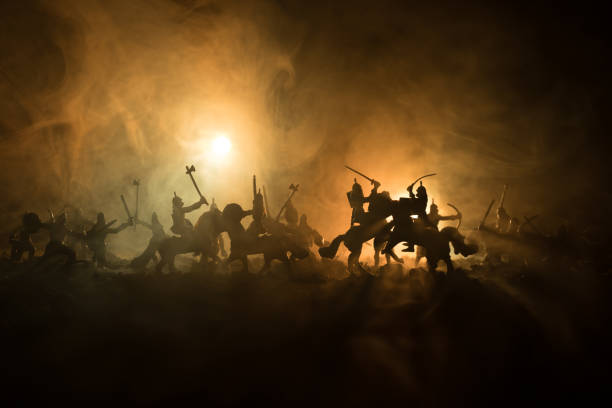
Writing Engaging Battle Scenes
Writing engaging battle scenes is akin to choreographing a symphony of chaos and valor, where every clash of sword, roar of magic, and strategic maneuver becomes a note in the crescendo of conflict. Picture the battlefield as a canvas, where the strokes of the pen paint vivid landscapes of carnage and courage.
It’s not just about describing the clash of arms but immersing the reader in the visceral dance of combat, where the scent of sweat and iron lingers, and the air crackles with the energy of unleashed power.
Engaging battle scenes are more than choreography; they are a fusion of sensory bombardment and emotional resonance.
It’s the strategic ballet of generals, the desperate struggle of foot soldiers, and the unpredictable interplay of magic that captivates readers and propels them into the heart of the maelstrom.
In the realm of military fantasy, writing gripping battle scenes transcends the tactical; it becomes a narrative alchemy that transforms conflict into a visceral, unforgettable experience for the reader.
Balancing action and strategy
Balancing action and strategy in the narrative landscape of military fantasy is akin to conducting a symphony where the thunderous beats of combat harmonize with the cerebral melodies of tactical brilliance.
It’s the delicate interplay between the visceral engagement of warriors on the front lines and the calculated moves of military masterminds orchestrating the larger campaign.
Too much emphasis on action risks drowning the story in a cacophony of chaos, while an overdose of strategy might render the tale overly cerebral. The art lies in finding the equilibrium, where the ebb and flow of combat seamlessly integrate with the intricate dance of strategic thinking.
It’s about infusing heart-pounding battles with a strategic undercurrent, allowing the reader not only to witness the physical clashes but also to appreciate the intellectual prowess that shapes the course of warfare.
In the realm of military fantasy, the sweet spot between action and strategy is where the narrative finds its rhythm, captivating readers with a pulse-pounding, intellectually satisfying journey through the throes of war and magic.
Themes and Messages
Themes and messages in military fantasy are the resonant echoes that linger in the aftermath of magical clashes and epic warfare. Beyond the gleaming blades and swirling enchantments, these themes are the beating heart of the narrative, pulsating with timeless truths and profound reflections.
Imagine exploring themes of honor and sacrifice, where characters grapple with moral complexities amidst the chaos of conflict. These stories become vessels for conveying the impact of war not just on landscapes but on the very souls of those who wage it.
Themes and messages in military fantasy transcend the fantastical; they are the ethereal threads woven through the fabric of the narrative, prompting readers to ponder the profound questions that echo across both realms and realities.
In this literary crucible, the messages become not just whispers of magic but profound, thought-provoking echoes that resonate long after the final page has turned.
Exploring themes of honor and sacrifice
Within the realm of military fantasy, the exploration of themes such as honor and sacrifice transcends the mere clash of swords and the surge of mystical energies.
It is a profound journey into the crucible of moral integrity and selflessness, where characters are forged not only by the battles they engage in but by the choices that define their very essence.
Picture warriors standing at the crossroads of duty and personal conviction, grappling with the weight of decisions that could shape the destiny of realms.
In these tales, honor becomes the lodestar guiding the righteous, while sacrifice emerges as the currency paid for a greater good.
The narratives become vessels for contemplating the ethical dimensions of war, where characters navigate the murky waters of moral ambiguity, leaving readers to ponder the enduring question of whether the ends truly justify the means.
In this exploration, military fantasy becomes not just an escapade into magical realms but a mirror reflecting the complexities of human nature when confronted with the crucible of conflict.
Researching Military Terminology
Embarking on the journey of researching military terminology for a fantasy narrative is akin to deciphering the secret lexicon of an arcane order.
It’s not just about memorizing the drill; it’s delving into the very soul of the battlefield, where every term carries the weight of history and echoes with the thunderous footsteps of soldiers long past.
Picture the lexicon as a treasure trove of linguistic weapons, each phrase a finely honed blade that cuts through the fog of war. From the staccato cadence of orders to the ominous hum of military jargon, this linguistic expedition becomes a quest to imbue the fantastical with the gritty authenticity of the real.
In the symphony of terminology, the narrative takes on a martial rhythm, a linguistic ballet where words become the instruments through which the pulse of military fantasy resonates.
It’s not just research; it’s a linguistic conquest, turning the lexicon of war into a spellbinding incantation that enchants readers and propels them into a realm where the language itself is as potent as any enchanted blade.
Utilizing authentic military terminology
Utilizing authentic military terminology in the crafting of military fantasy is akin to forging a narrative alloy that melds the fantastical with the genuine. It is more than a mere linguistic embellishment; it’s a deliberate choice to infuse the story with the rugged authenticity of military lingo.
Imagine battlefields where the crisp commands reverberate with the authority of seasoned generals, and the resonance of technical terms adds a layer of credibility to the intricate choreography of war.
From the precise nomenclature of weaponry to the disciplined cadence of formations, this linguistic precision becomes the foundation upon which the immersive realms are built.
Authentic military terminology acts as a portal, transporting readers not only to the front lines of fantasy conflict but embedding them in a narrative where every phrase carries the weight of battlefield tradition and tactical nuance.
It’s the art of seamlessly blending reality with the fantastical, ensuring that the language itself becomes a portal to a world where war is not just a concept but an immersive, authentic experience.
Editing and Polishing
Editing and polishing in the realm of military fantasy is the alchemical refinement that transforms raw narrative ore into a gleaming literary artifact.
Picture the editing process as a blacksmith’s forge, where every revision hones the edge of the narrative blade, ensuring its sharpness and resonance.
It’s not just about correcting grammar or polishing prose; it’s about fine-tuning the symphony of words until it reverberates with the perfect cadence of battle drums and mystical chants. In this crucible of refinement, pacing becomes the heartbeat, and the rhythm of conflict is finely calibrated to maintain an unrelenting tempo.
Each revision is a brushstroke that enhances the vividness of battle scenes, ensuring that every clash of steel and surge of magic is rendered with cinematic brilliance.
Editing and polishing are the stages where the narrative ascends from the raw tumult of creation to the polished crescendo of a literary masterpiece, captivating readers and immersing them in a world where every word is a portal to the fantastical theater of war.
Fine-tuning pacing and rhythm in battle scenes
Fine-tuning pacing and rhythm in battle scenes within the realm of military fantasy is akin to orchestrating a symphony where the tempo dictates the heartbeat of conflict.
It’s the art of crafting a narrative cadence that mirrors the ebb and flow of warfare, where each heartbeat is a clash of steel, and every breath is laden with the intensity of magical incantations.
Picture battles as dynamic crescendos, with the pacing serving as the conductor’s wand, guiding readers through the tumultuous waves of action and respite. Too swift, and the nuance of strategy is lost; too languid, and the urgency dissipates.
It’s about creating a rhythmic dance that keeps readers on the edge of their seats, capturing the essence of chaos and order in a tapestry of words.
In this intricate choreography, pacing becomes the linchpin that transforms battle scenes from mere descriptions into pulse-pounding, immersive experiences where time itself seems to quicken with the heartbeat of the fantastical conflict.
Frequently Asked Questions (FAQ) about How To Write A Military Fantasy
What defines a military fantasy genre?
Military fantasy is a genre that seamlessly blends elements of traditional fantasy with a strong focus on warfare, encompassing epic battles, strategic maneuvers, and the integration of military structures and tactics into the narrative.
How do I establish a captivating fantasy world for my military-themed story?
Begin by crafting a rich and immersive world, detailing geography, cultures, and magic systems. Introduce unique elements that set the stage for epic military conflicts while ensuring consistency and believability.
Can you provide tips on creating compelling military factions and nations in a fantasy setting?
Develop diverse factions with distinct histories, ideologies, and conflicts. Consider the impact of magic on their dynamics, and explore intricate relationships and alliances that add depth to the narrative.
What role does magic play in military fantasy, and how do I integrate it effectively?
Magic in military fantasy can serve as a powerful force, influencing weaponry, tactics, and the very fabric of warfare. Establish clear rules and limitations for your magic system, ensuring it complements rather than overwhelms the military aspects of the story.
How should I approach character development in a military fantasy setting?
Introduce a range of characters with varied backgrounds, skills, and motivations. Include protagonists, antagonists, and supporting characters with distinct military roles, and explore their personal growth amidst the backdrop of war.
What considerations should be taken into account when designing military structures and hierarchies in a fantasy world?
Create realistic military structures, complete with ranks, units, and specialized roles. Factor in the influence of magic on organization and explore how fantastical elements impact the hierarchy and chain of command.
How can I effectively portray large-scale battles and military campaigns in my writing?
Plan out strategic warfare scenarios, considering terrain, tactics, and the influence of magic. Balance the epic scale with personal perspectives to keep readers engaged, and ensure the consequences of battles resonate throughout the narrative.
Is it important to incorporate political intrigue into a military fantasy story?
Absolutely. Integrating political elements adds depth to the narrative, showcasing the relationships between military leaders and political figures. Explore the intricacies of diplomacy and the impact of wartime decisions on the broader political landscape.
What role do cultural nuances play in crafting a convincing military fantasy world?
Cultural aspects, including rituals, traditions, and the impact of war on civilians, add authenticity to your world. Delve into the psychological toll of war on individuals and societies, creating a nuanced portrayal of the fantasy military experience.
How do I balance character arcs and growth within the context of military fantasy?
Develop character arcs that reflect personal growth and challenges within the military setting. Explore the moral and ethical dilemmas faced by characters, adding layers to their experiences in a world dominated by conflict.
Any tips for crafting authentic military dialogue and language in a fantasy setting?
Use language that reflects the military culture of your fantasy world. Introduce unique idioms and phrases, and pay attention to the nuances of communication within a military context, ensuring it resonates with the overall setting.
What steps should I take during the editing and revising process for a military fantasy manuscript?
Review your work for consistency, pacing, and coherence. Seek feedback from beta readers or writing groups to refine your narrative, ensuring that both the fantastical and military elements align seamlessly throughout the story.
Conclusion
In conclusion, crafting a compelling military fantasy requires a delicate balance between the fantastical and the strategic, offering readers an immersive experience that transcends the realms of traditional fantasy.
By meticulously defining your world, creating dynamic factions, and weaving intricate magic systems, you lay the foundation for epic battles and conflicts.
The interplay between diverse characters, realistic military structures, and cultural nuances enhances the authenticity of your narrative.
Political intrigue and personal growth become essential threads, adding layers to the tapestry of your military fantasy world. Through well-planned dialogue and language, you can immerse readers in the unique cadence of military life, creating an authentic and captivating experience.
As you navigate the challenges of large-scale battles and campaigns, remember that the consequences should resonate not only on the battlefield but also within the hearts and minds of your characters.
The journey doesn’t end with the first draft; meticulous editing and revision ensure a cohesive and engaging story. Seek feedback to refine your work, addressing both the fantastical and military elements with equal care.
Ultimately, the success of a military fantasy lies in the fusion of imaginative world-building, strategic warfare, and compelling characters, inviting readers to embark on a thrilling adventure that transcends the boundaries of reality and fantasy.


